A bank is a financial institution that accepts deposits from the public and creates a demand deposit while simultaneously making loans. Lending activities can be performed either directly or indirectly through capital markets. A bank is the extension of credit, and for facilitating the transmission of funds. Due to the importance of banks in the financial stability of a country, most jurisdictions exercise a high degree of regulation over banks. Here are The ranking of the 10 biggest banks are built according to banks’ total assets.
1.Industrial and Commercial Bank of China (ICBC)
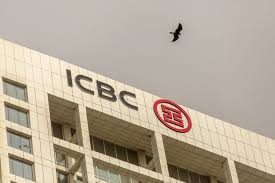
The largest and richest bank in the world is the Industrial and Commercial Bank of China (ICBC). ICBC’s headquarters are located in Beijing. By the total number of assets, customers, employees, loans and deposits; ICBC, as it’s often referred to, completely dominates the rest of the biggest banks in the world. ICBC has $4,322 billion total assets according to the latest data, and its market capitalization totals $424 billion. It has more than 4,60,000 employees. 70% of government-owned company ranked number one all over the 1000 Banks. ICBC’s total assets are thought to be in the region of $4.2 trillion dollars according to the latest data. Almost 1/5 of all bankings are in China only.
- China Construction Bank Corporation
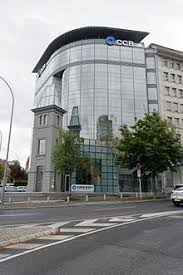
According to the latest data, it has $3,822 billion in assets, and its market capitalization totals more than $204 billion. Originally, CCB was created for government exchanges, and only later, it was redeveloped into the commercial bank. The company operates more than 14,000 branches all around the globe, with about 372,000 employees. China Construction Bank Corp. engages in the provision of a wide range of financial services to corporate and personal customers. It operates through the following business segments: Corporate Banking, Personal Banking, Treasury, and Others. The Corporate Banking segment provides a range of financial products and services to corporations, government agencies and financial institutions, which comprises of corporate loans, trade financing, deposit taking and wealth management services, agency services, financial consulting and advisory services, cash management services, remittance and settlement services, custody services, and guarantee services.
The Personal Banking segment provides personal loans, deposit taking and wealth management services, card business, remittance services, and agency services to individual customers. The Treasury segment represents inter-bank money market transactions, repurchase and resale transactions, investments in debt securities, and trade of derivatives and foreign currency. The Others segment refers to equity investments and revenues, results, assets and liabilities of overseas branches and subsidiaries. The company was founded in October 1954 and is headquartered in Beijing, China. The company was founded in 13,629 domestic branches.
- Agricultural Bank of China
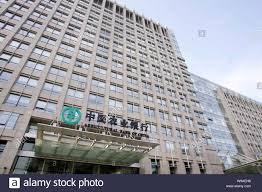
Agricultural Bank of China (ABC), also known as AgBank. It was founded in 1951, and has its headquarters in Dongcheng District, Beijing and ABC has nearly 24,000 representatives in the country and abroad. Total assets of the Agricultural Bank of China comprise more than $3,698 billion, and according to the latest data, its market capitalization is $147 bln. This bank was established to support agriculture. This bank today also handles loans to nonagricultural businesses and individuals. It is one of the four major state-controlled banks. Agricultural Bank of China engages in the provision of international commercial banking and financial services. This is driven by bank’s long history of receiving state support. ABC was designated as a global systematic important bank. ABC is China’s third-largest commercial bank by total assets.
The bank has one of the largest domestic networks, which extends deeply into China’s county areas. This helps the bank build a commanding franchise in rural markets and provides it with a low-cost and stable deposit base. The central government is ultimately the largest shareholder of all five state banks and has a record of providing solvency and asset-quality support. Since the late 1970s, the Bank has evolved from a state-owned specialized bank to a wholly state-owned commercial bank and subsequently a state-controlled commercial bank. The Bank was restructured into a joint stock limited liability company in January 2009. In July 2010, the Bank was listed on both the Shanghai Stock Exchange and the Hong Kong Stock Exchange, which marked the completion of our transformation into a public shareholding commercial bank.
- Bank of China ltd
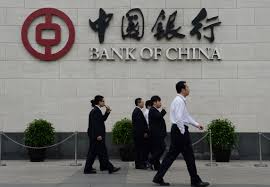
The Bank of China is one of the oldest and most reliable banks in China. It is one of the four biggest state-owned commercial banks in China. It was created in 1912 and still leads in the national banking sector. Over 70% of the company belongs to the Chinese government, and it has offices in over 20 countries. According to the data, its assets are near $3,387 billion, and its market capitalization is about $113 bln. Bank of China is legally separate from its subsidiary Bank of China , although they maintain close relations in management and administration and co-operate in several areas including reselling BOC’s insurance and securities services. Its headquarters are in Xicheng District, Beijing. In Hong Kong, Frankfurt and other financial centers across the globe, the bank functions as clearing house of the currency. The bank is also the issuer of overseas yuan-denominated bonds.
Mumbai holds the pride of being the wealthiest city in India, with the highest GDP of all the cities in South, West and the Central Asia. The city houses important financial institutions such as the Reserve Bank of India, the Bombay Stock Exchange, the National Stock Exchange of India, the SEBI and the corporate headquarters of numerous Indian companies and multinational corporations. Bank of China has commenced its business in India by launching the first branch in Mumbai in June 2019. The India branch works on the international network of Bank of China across the globe, with a world class banking, professional strengths and a diversified platform of the Bank across various sectors. Operating strictly in compliance with local laws and regulations, Bank of China India Branch provides comprehensive business services in Corporate Banking, Treasury and Branch Banking.
- JPMorgan Chase
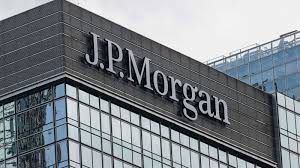
JPMorgan Chase is one of the most eminent and popular US banks. This company was created in 2000 as a result of merging several huge banks. JPMorgan Chase HQ is located in Manhattan, New York City. It is one of the largest investment companies in the world. Now its assets total $3,139 bln, and its market capitalization is over $292 bln, which also makes it one of the most expensive companies in the world. JPMorgan Chase & Co. provides global financial services and retail banking. The Company provides services such as investment banking, treasury and securities services, asset management, private banking, card member services, commercial banking, and home finance.
JP Morgan Chase serves business enterprises, institutions, and individuals. JPMorgan Chase & Co. is an American multinational investment bank and financial services holding company. It is also the world’s most valuable bank by market capitalization. The Chase brand is used for credit card services in the United States and Canada, the bank’s retail banking activities in the United States, and commercial banking. Both the retail and commercial bank and the bank’s corporate headquarters are currently located at 383 Madison Avenue in Midtown Manhattan, New York City, while the prior headquarters building directly across the street, 270 Park Avenue, is demolished and replaced with a new building.
- HSBC Holdings plc
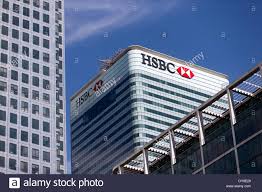
London’s HSBC is one of the biggest banks in Europe, totaling $2.92 tln. in assets. Originally, the purpose of its creation was to perform exchanges between Europe and China, and it still stays crucial in such actions. It also has more than 10 subsidiaries, which perform all possible operations inside this sector.
HSBC Holdings plc is a multinational investment bank and financial services holding company. HSBC traces its origin to a hong in British Hong Kong and its present form was established in London by the Hongkong and Shanghai Banking Corporation to act as a new group holding company in 1991. The Hongkong and Shanghai Banking Corporation opened branches in Shanghai in 1865 and was first formally incorporated in 1866.
HSBC has around 3,900 offices in 65 countries and territories across Africa, Asia, Oceania, Europe, North America, and South America, and around 38 million customers. HSBC is organised within four business groups: Commercial Banking, Global Banking and Markets, Retail Banking and Wealth Management, and Global Private Banking. In 2020, the bank announced that it would consolidate its Retail Banking & Wealth Management arm with Global Private Banking, to form Wealth & Personal Banking. HSBC has a dual primary listing on the Hong Kong Stock Exchange and London Stock Exchange and is a constituent of the Hang Seng Index and the FTSE 100 Index. Key Role as European Hub: HSBC Bank plc’s Issuer Default Ratings (IDRs) are driven by support from its ultimate parent, HSBC Holdings plc.
- Mitsubishi UFJ Financial Group
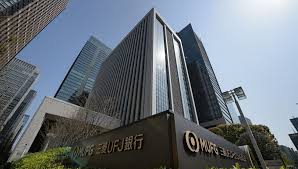
This Japanese holding company has $2.89 tln. in assets, which makes it one of the “best” banks in Japan. MUFG’s department network spread all around the world allows MUFG to perform in 40 different countries. The company was created in 2005 by the merger of the two largest banks of Japan, and its headquarter is located in Osaka City. MUFG has the target of 550.0 billion yen of profits attributable to owners of parent for the fiscal year ending March 31, 2021. MUFG is engaged in financial service businesses such as banking business, trust banking business, securities business and credit card/loan businesses. Because there are various uncertainties caused by economic situation, market environments and other factors in these businesses, MUFG discloses a target of its profits attributable to owners of parent instead of a forecast of its performance.
The forward-looking statements are made based upon, among other things, the company’s current estimations, perceptions and evaluations. In addition, in order for the company to adopt such estimations, forecasts, targets and plans regarding future events, certain assumptions have been made. Accordingly, due to various risks and uncertainties, the statements and assumptions are inherently not guarantees of future performance, may be considered differently from alternative perspectives and may result in material differences from the actual result. The financial information included in this financial summary report is prepared and presented in accordance with accounting principles generally accepted in Japan. Differences exist between Japanese GAAP and the accounting principles generally accepted in the United States in certain material respects. Such differences have resulted in the past, and are expected to continue to result for this period and future periods, in amounts for certain financial statement line items under U.S. GAAP to differ significantly from the amounts under Japanese GAAP. For example, differences in consolidation basis or accounting for business combinations, including but not limited to amortization and impairment of goodwill, could result in significant differences in our reported financial results between Japanese GAAP and U.S. GAAP.
- Bank of America (BoA)
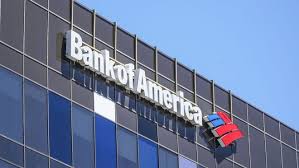
The BoA is the second largest bank in the USA. It has an extensive range of financial services in the whole country and abroad. The headquarters are located in Charlotte City, North Carolina. According to the BoA balance sheet has $2,620 bln. assets and its market capitalization is about $209 bln. Mitsubishi UFJ Financial Group, Inc. operates as a holding company, which provides financial services through its subsidiaries. It operates through the following segments: Integrated Retail Banking Business Group, Integrated Corporate Banking Business Group, Integrated Trust Assets Business Group, Integrated Global Business Group, Global Markets and Others. The Integrated Retail Banking Business Group segment manages domestic business that provides retail banking services, which includes commercial and trust banking; securities trading; and retail product development, promotions, and marketing.
The Integrated Corporate Banking Business Group segment covers all domestic corporate businesses, including commercial banking, investment banking, trust banking, and securities businesses. The Integrated Trust Assets Business Group segment provides asset management and administration services for pension and security trusts, in addition to consultation services for pension management schemes and payouts. The Integrated Global Business Group segment covers businesses outside of Japan. The Global Markets segment offers assets and liability management, strategic investment, foreign exchange operations and financial products. The Others segment operates corporate centers of related companies. The company was founded on April 2, 2001 and is headquartered in Tokyo, Japan.
- BNP Paribas
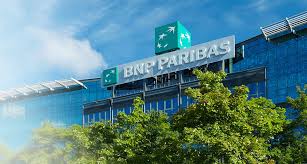
BNP Paribas was created in 1999, and now it tops the financial, banking, and insurance rankings. Currently, the company has representatives all around the globe, and its headquarters are located in Geneva, Paris, and London. BNP Paribas has been named “World’s Best Bank for Corporates” and “World’s Best Bank for Financial Inclusion” 2020 by Euromoney, a publication specializing in international finance. As a European leader and a leading international banking player, BNP Paribas is recognized for the expertise of its teams and its transversal approach to its business lines, which are grouped into Corporate and Institutional Banking, Domestic Markets and International Financial Services, in order to offer the best possible service to our clients. For example, in the EMEA region, BNP Paribas’ banking teams coordinated more than €46 billion of DCM (Debt Capital Market) transactions over the past year. In addition, the Group continued to intensify its efforts in several areas to integrate sustainable development into its products and operating processes, introduce significant measures and help its clients to accelerate this transition.
BNP Paribas has thus introduced proactive sector policies, taken financial steps to promote sustainable financing, and supported its clients in integrating sustainable development into their activities through innovative financing solutions. Its assets compound to $2,336 bln and the bank has $39 bln of market capitalization. We have also invested in the products and people to provide simple and effective solutions in the world’s fastest growing markets. We are experts in capital markets, advisory and financing businesses. Our client-centric model aims to anchor its leadership position in Europe and leverage the rapid growth in Asia. BNP Paribas was one of the first banks to start a dialogue with India in 1860 begining operations in Calcutta (renamed Kolkata). We have since then spread our branches to eight key metros & mini metros and widened and enriched our product repertoire. Today, BNP Paribas is the second oldest foreign bank on the Indian soil and is positioned amongst the leading corporate banks in India. A shareholders’ Club set up in 1995, is open to “individual” shareholders holding at least 200 shares. As of today it counts more than 63,000 members. Meetings with shareholders are arranged during the year in the main regional cities: the bank’s policy is presented by senior executives of BNP Paribas and members of the Top Management.
- Credit Agricole
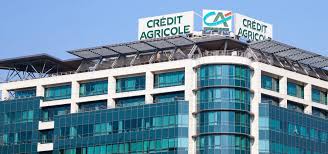
Credit Agricole is one of the largest companies in France, which successfully controls a large part of the banking sector inside the country. Credit Agricole CIB has been present in India since 1981 and is located as today in Bangalore, Chennai, Delhi, Mumbai and Pune. From these 5 branches, the Bank also deals with the large markets in Ahmedabad, Kolkata, Hyderabad and Baroda. The Bank offers a comprehensive range of products and services, tailored to the needs of Indian companies, multinational companies and financial institutions. It has a balance of $1,984 bln. in assets. Gross customer capture was strong, with 416,000 new customers captured since the start of the year, and a 25,000 increase in the customer base. Lastly, commercial activity in capital markets was buoyant in order to meet customer needs in terms of hedging and bonds. In the first quarter of 2020, Credit Agricole Group’s stated net income Group share came to €908 million versus €1,350 million in the first quarter of 2019.
For Crédit Agricole S.A., the underlying net income Group share reached €1.1 bn for the second quarter of 2020, down -10.9% compared to 2019, and €1.8 bn for the first half of the year. Credit Agricole SA set aside more than expected to cover souring loans in the second quarter after the covid pandemic hit the French lender’s retail clients and large corporate customers. Provisions in the three months through June jumped to 842 million euros ($998 million), higher than the 775 million-euro estimate of analysts polled by Bloomberg. Costs to cover souring debt drove down results at some of the lender’s most important business units, including the large clients segment, which saw a five-fold increase in the cost of risk from a year earlier.
Credit Agricole is more diversified and less dependent than rivals BNP Paribas SA and Societe Generale SA on trading, though it did benefit from the volatility that boosted fixed income results at rivals. At the same time it was able to avoid the dividend-related losses that caused management upheaval earlier this week at SocGen and Natixis.
